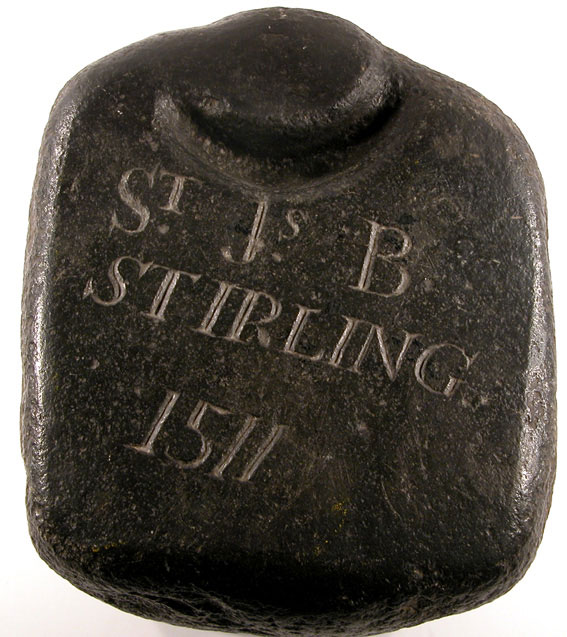Curling History
Curling, like shinty, is a native sport to Scotland and can be traced back to medieval times, with the world’s oldest curling stone (in the collection of the Stirling Smith Museum) dating from 1511. The earliest surviving reference to curling dates from 1541 when a challenge match which involved the throwing of stones across ice was recorded. The participants in this contest were a monk from Paisley Abbey and a relative of the abbot. By the second half of the eighteenth century the “Roaring Game” was widely being played across Lowland Scotland and references can be found in poetry. For example, the following passage comes from Tam Samson’s Elegy which was written by Robert Burns in 1786:
When Winter Muffles up his clock,
And binds the mire like a rock;
When to the loughs the curlers flock,
Wi’ gleesome speed…
Wha will they station at the cock?
Tam Samson’s Deid!

Image courtesy of the Stirling Smith Art Gallery & Museum
Towards the end of the eighteenth century Reverend John Shephard, Minister of Muirkirk, wrote of his parishioners:
Their chief amusement in winter is curling, or playing stones on smooth ice. They eagerly vie with one another who shall come nearest the mark, and one part of the parish against another, one description of men against another, one trade or occupation against another, and often one whole parish against another.
Over the course of the eighteenth century, as the popularity of the game flourished, curling clubs and societies sprang up across Scotland. Different versions of the game evolved as a result of this expansion and, out of necessity, a national club was created to regulate the game. The Royal Caledonian Curling Club, instituted in 1838 as the Grand Caledonian Curling Club, is therefore one of Scotland’s oldest national sporting bodies.
Curling traditionally was played outdoors and could attract large numbers of people. These impressive outdoor gatherings were known as ‘Bonspiels’. The Royal Caledonian Curling Club helped to organise ‘Grand Matches’ which divided the players into teams representing the North of Scotland and the South. Cold winter weather was crucial for ice to form sufficiently for the outdoor rinks. These conditions were not always guaranteed even within Scotland’s cold wintry climate and indoor rinks were introduced to Scotland in the early twentieth century in order to guarantee regular games. The first indoor rink in Scotland opened at Crossmyloof in Glasgow in 1907 with rinks also being built in Edinburgh and Aberdeen in 1912.
Curling’s links to the rest of the world
The game of Curling is a long established aspect of Scotland’s culture and customs and can therefore be linked to the story of the Scottish Diaspora. Curling was played by Scottish emigrants living in the colder climates of the world and the game was particularly strong in Canada where today the Royal Montreal Curling Club (founded in 1807) can claim to be the oldest sports club in North America. It is claimed that Curling in the United States dates back to the 1830s when Scottish soldiers and settlers brought the game to Michigan.
Curling was sufficiently popular to be included at the inaugural Winter Olympics in 1924 and the sport was included as a demonstration event at the 1932 Winter Games and again, after a considerable gap, at the 1988 and 1992 Winter Games. The ‘Roaring Game’ has been firmly established as an official Winter Olympic sport since the 1998 Winter Games which took place in Japan and today there are 54 national associations active worldwide, stretching from Brazil to China.






